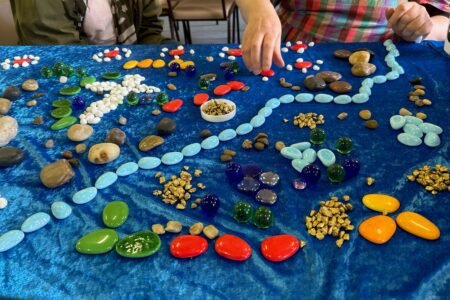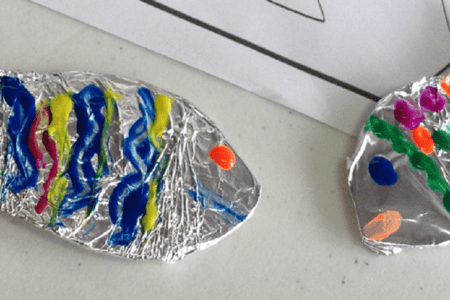Digital community strategies
By Kelly Skilton
By gathering together we create opportunities for people to build connections, regardless of whether we are onsite together or online. Our Digital CARPETS remind us that our digital ‘rooms’ need to be safe and welcoming by addressing your community’s Connection, Accessibility, Responsibility, Purpose, Empowerment, Transformation and Space.
If you have managed to implement these points, then it might be time to consider the following 10 strategies to help build your community:
Effective sharing
In any community, whether through a digital medium or without it, we need to make sure that the content we share with each other is reaching what the community is wanting and needing. There is no point in doing a study series on The Book of Acts, full of amazing links, images and guides, if your community has already studied The Book of Acts in the last couple of years. Taking the time to consider (and ask) what your community is needing is vital to know what to share together. Perhaps ask your community what they’re looking for when you gather, what things do they need and how can you better connect them all.
Not all about you
For communities to be about authentic connection together, it is important that your digital spaces offer opportunities for people to connect together without you. Of course, making sure that your leadership team still is providing safe moderation, it is important that your communities are able to join in and influence the content being shared. Without allowing the community to interact and influence what is happening within the community, it becomes just a place of broadcasting. Even worse is when it becomes a place of ‘self-broadcasting’ and all things hinge on the opinions of one person – that is not community.
Connection times
If you create a digital space without then offering times of engagement, it is as if we have left the door of a room open, walked in and then wondered why people are not gathering. People enjoy contributing together toward something specific. Whether it is a discussion, a game or even watching a movie at the same time, having something to connect in with keeps your community gathering with one another. In the digital space it is important that we offer opportunities for synchronous engagement as well as asynchronous engagement.
Be inclusive
For a person to feel a part of a community they have to be able to feel a sense of safety. Particularly in Christian community is it important that we allow people to have opportunities to engage authentically and holistically. Making sure that your community code of conduct is easily accessible, and also followed through, allows your community to know they’re valued, loved and are welcomed.
Different levels of access
Does your digital community allow different levels of engagement? Sometimes people only want to participate in the online discussions, where others like to engage in the own time and space with content that you may be providing. It is important to allow different ways of connection for people to be able to explore, connect and mature depending on their faith stage. For some people, the chance to watch along from the outside lets them explore faith at their own pace – that means sharing broadcasts, images and content is still important even if there are no comments written. For some people, watching along is exactly what they’re needing at their stage of life.
Windows of opportunity
There is nothing worse than feeling like your information is going nowhere, particularly when you have been asked to participate in something. Communities need to be able to see the efforts they are going to, whether it is the impact of a fundraiser or the next steps you will be taking in the advice that was shared. Being able to see growth across time reminds everyone that we are participating to something beyond ourselves. Make sure that you’re giving the space to offer back what you have heard and take people along the journey if things they have suggested are going to be implemented.
Moderation
Closely linked with point 4, is the reminder that we need to offer effective moderation. Making sure that your leaders are up to date with training, are regularly checking in with one another and looking for ways to keep the community functioning safely helps those participating know that we do truly care about them. Making sure that we follow up on any potential problems and not letting them just be swept under the rug keeps our community honest and transparent.
The nudge
Particularly when we are just starting out, it may seem like there are a lot of ways to connect together but no one is taking the chance to use them. A lot of work needs to go into reminders, ‘nudges’ and prompts for community members to engage. This is not because what you’re doing isn’t good, it is just that each person has a life full of complexities and different people. A simple reminder email, post, text or announcement could be the difference in people connecting in or not.
Feedback
Like point 2, it is important that you engage with the thoughts and ideas of your community. Giving opportunities for positive and negative feedback all go into the constructive critique. Do not be afraid of asking for the problems happening – particularly in faith communities we do not want to give opportunities for the problems to be aired, because we know that it could potentially cause a bigger issue. However, the more opportunities we give for people to share their true opinions, the smaller the issues become as we address them before they become too big to handle.
Practice what you preach
If you are wanting people to be active in the community, then you have to be active. Responding to the social media posts, contributing to community games, asking people how they are. Being able to authentically engage as a member of the community not only helps you to be more aware of the community issues, but it also allows for deeper connection and vulnerabilities. If participants can see that you’re partaking then it serves as an invitation for them to join in as well.
Are there any other thoughts or ideas that you think are important for digital communities to consider? Make sure let us know at [email protected],au





